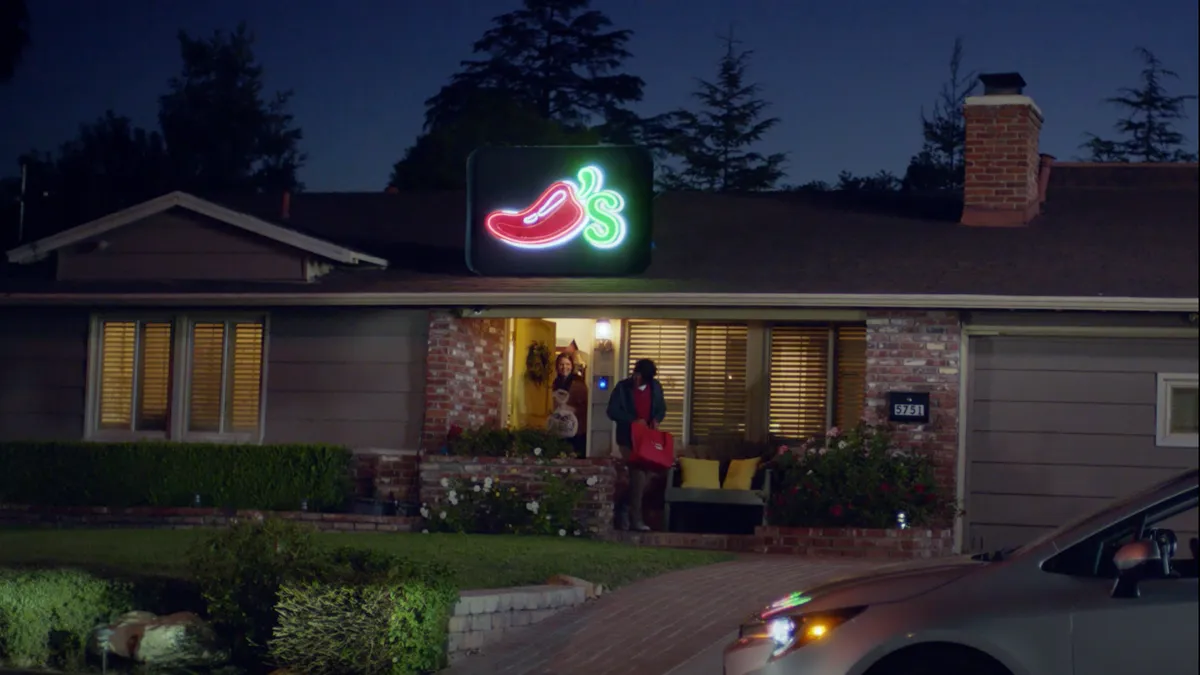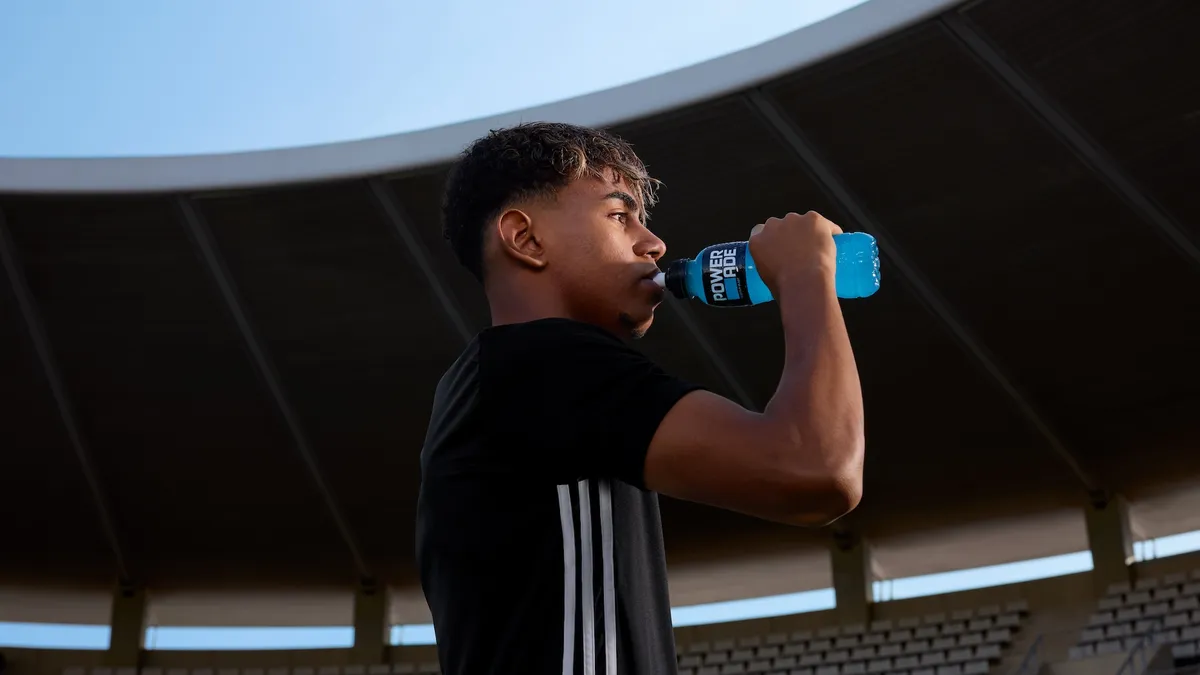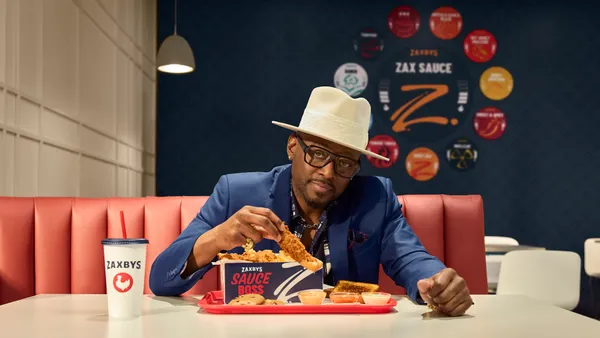In 2018, Chili's parent company Brinker International saw its stock surge more than 30% in one six-month period during what CEO Wyman Roberts called a "pivotal year" for the business. That growth outstripped competitors in the casual restaurant space that are under siege not just from QSR and fast casual but delivery, as well.
Key to that growth was strengthening the brand's value proposition, which Chili's did last year by introducing a 3-for-$10 menu. That menu — and other value-oriented offers like the chain's $5 margarita of the month — were spearheaded by Ellie Doty, who was promoted to CMO in September after more than two years as VP for marketing and culinary for the brand.
"That's an unbeatable value proposition for our guests that our brand is in a unique position to offer. That's been under my watch and we're continuing to support it," Doty told Marketing Dive in an interview.
Doty, who came to Chili's after more than a decade at QSR conglomerate Yum Brands, where she worked in various capacities for its KFC, Taco Bell and Long John Silver's chains, now has the opportunity to build on last year's growth as the brand steps up its efforts in delivery and curbside pick-up. She spoke with Marketing Dive about her work at Chili's, recent campaigns and the differences between casual and QSR.
The following interview has been edited for clarity and brevity.
MARKETING DIVE: What have you learned about the Chili's brand since joining the company in 2017?
ELLIE DOTY: One of the most important pieces of what I've worked on is getting clear on who we are; we call it "brand DNA" work. Chili's has a lot to work with from the past in terms of its founding and authentic, rich history. But over time, there have been a lot of competitors in our space that have made it harder for us to differentiate.
One of the first pieces of work was getting really clear on our position and our guest: who are they, how do they think and feel, what do they want from us, and how can we uniquely meet their needs better than anyone else.
You've become CMO at a time when the role is evolving across the marketing landscape. How does the role work at Chili's?
DOTY: At Chili's, IT and technology, digital and data, are all vitally important marketing tools. Because of that relationship between the head of digital, the head of IT and me in marketing, we have some matrix reporting relationships and we have some dotted lines that work in more ambiguity than traditional silos. That works really well for Chili's. On my team, I have digital and analytics within marketing, and that group has a dotted line to IT. That structurally supports an ongoing integrated relationship between functions, and is great for both teams.
It's the same thing for internal and external communications. There's a dotted line between the HR team and the marketing team. Our marketing plan is incomplete without what we say internally. A big priority for us right now is making an effort to show real people, rather than exclusively putting the typical marketing tool kit on display.
"Our marketing plan is incomplete without what we say internally."

Ellie Doty
CMO, Chili's
How has Chili's moved from one of the most iconic TV campaigns of all time to something that works in 2019 and beyond?
DOTY: We've made a lot of moves to our marketing away from mass channels and into personal and digital channels, and it's not just in what we say, but how we say it. We spend a lot of energy on cultivating relationships with people in our loyalty database — there are more than six million engaged names in there, and they get a lot of our attention.
We've also shifted en masse to online video. We're definitely working on creating authentic, real content but also showing up in authentic, real places.
An example of the latter is your recent campaign in Detroit. How did that come about?
DOTY: We've given our guest a name: value-oriented families. As we got focused on families, we really learned that families are under so much stress today, and Chili's can uniquely offer them that let-your-hair-down, kick-your-shoes-off, be-yourself, stress-free moments, whether you're at a restaurant or ordering food at home.
We did a survey through Wakefield and learned that 82% of Detroit families couldn't eat a meal together. At Chili's, that isn't okay with us! Plus, pick-up time [at school] is also a high-stress moment in the afternoon, so we thought, why don't we solve this problem for some families in Detroit?
How do you localize or amplify something like that?
DOTY: We like to experiment to a certain degree and we're happy to be local. Families that love Chili's pay a lot of attention in their local communities and other local communities. We're happy to amplify, but right now, what we've amplified is the ability for families to get Chili's at home and make any home a Chili's. That's been our big next step following the carpool campaign, is Chili's that can be delivered or picked up curbside.
Speaking of delivery and curbside, Chili's just launched the ChilEASE campaign. What is the main challenge for a restaurant like Chili's in this space?
DOTY: One of the challenges is the experience we create. As we partner with third parties, we wanted to make sure that [customers] have the Chili's they know and love. With DoorDash, they quickly and seamlessly integrated with our back-of-house technology. That was a must-have for us; that ease of tech integration goes hand in hand with our ability to create great experience for guests.
Casual dining occasions are down to just 28 per year. Going into delivery and off-premise puts us back in competition with fast casual and QSR and gives us 100 more dining occasions per year.
After your time at Yum Brands, what are the biggest differences between QSR and casual dining, from a marketing perspective?
DOTY: The magnitude of the experience created in a casual dining space versus a QSR one. That server defines the experience in so many ways — it really is a part of the marketing mix to consider the server interaction. That's why we think about how are they trained, staffed, retained, what do they look like. There's a much higher premium on that interaction because you're spending an hour there and tipping them at the end of it.
I spent my career at Yum in a franchise organization. There's a pretty material difference in marketing in franchise versus company-owned, and that's been a change for me. In organization-owned, you can move as a unit. Chili's can move 1,000 restaurants as a unit, and that can be challenging in a franchise environment. I loved the franchise world, got lots of ideas and enjoyed working with franchisees, but being able to move 1,000 restaurants at one time is a change.
Correction: A previous version of this story misstated that this was Doty's first interview since taking the CMO position at Chili's.






















